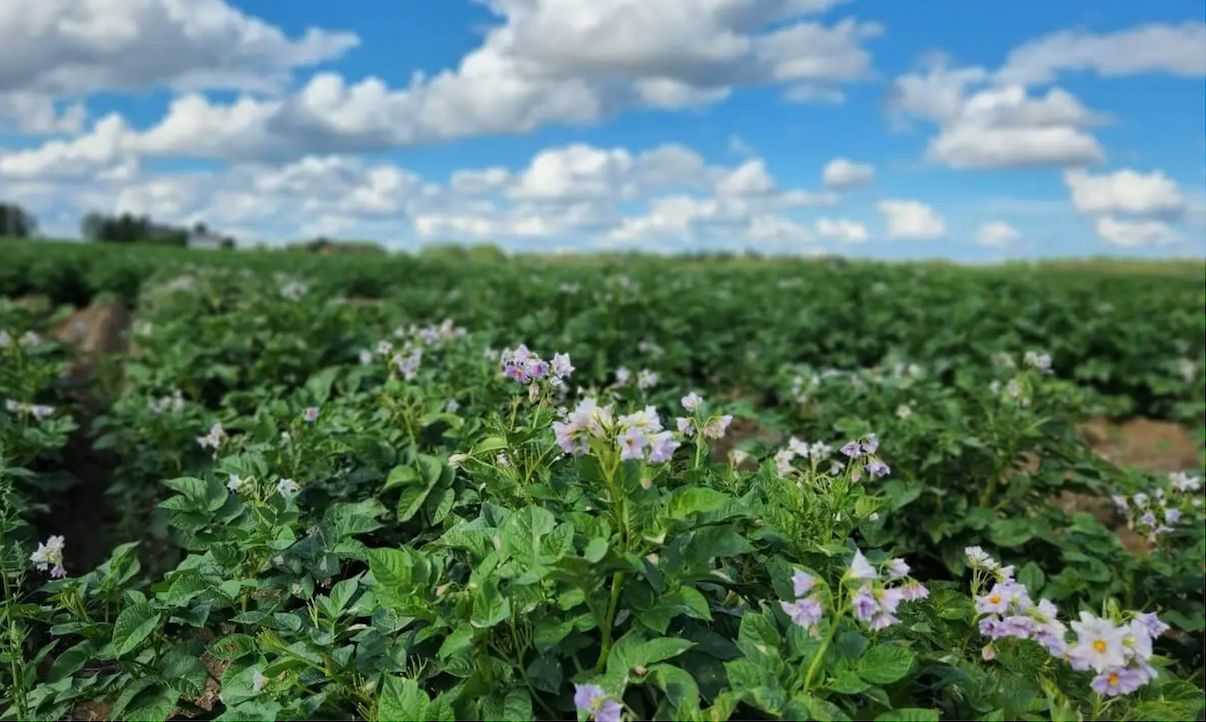Maine’s potatoes survived a wet planting season and June rains. And although it’s too early to forecast the crop’s size, acreage is up from last year, and pests and diseases are low, officials said.
That’s good news for Aroostook County, where most of Maine’s spuds are grown, with about a month to go before harvesting starts.
Potatoes have long been the lifeblood of County farmers and in 2021 produced sales of more than $209 million — up from $152 million the year before. With a good harvest, potatoes will remain Maine’s No. 1 crop.
Last year, growers planted 58,000 acres of potatoes, which was 7,000 acres more than the previous two years. This year’s acreage rose to 60,000, according to the National Agricultural Statistics Service.
Last year’s crop was so abundant that growers scrambled for more storage space, even using empty buildings at the former Loring Air Force Base. Spuds made news when railcars carried them out West to processors and when Massachusetts-based 99 Restaurants pledged to serve only Maine potatoes.
Farmers dealt with severe drought conditions two years ago that lessened crop yields, so much so that some qualified for federal assistance. They experienced the opposite last year, when nearly perfect growing conditions led to 20 percent more potatoes than usual.
Though this year’s wet spring delayed planting for about 10 days and August started out dry, the potatoes are growing well, Garrett Hemphill of Hemphill Farms in Presque Isle said Friday.
“It’s been good for growing. The crop has caught up pretty well because of the rain in
August,” Hemphill said.
He expects the farm will have a good harvest from its 350 acres of potatoes, though whether it will measure up to last year remains to be seen because June rains drowned some of the seed planted.
The farm also planted 400 acres of oats this year.
Northern Maine has seen about 2 inches of rainfall so far this month, said James Dill, pest management specialist at UMaine Cooperative Extension.
The Extension issues weekly bulletins during growing season, keeping track of potato diseases and pests and advising growers on treatment regimens.
The incidences of potato pests, such as the Colorado potato beetle, flea beetle and corn borer moth, have been low overall, Dill’s Aug. 12 bulletin said.
Moderate rainfall and cooler temperatures have been a welcome change, but cool, wet weather can promote late blight, a fungus that can kill plants and lead to rot in potatoes and tomatoes.
Blight was reported in Mars Hill, Limestone and the Caribou area, though no fields were infected, Dill said.
Hemphill Farms has traps to catch airborne blight spores. Though some spores were found, their fields were not infected, Hemphill




